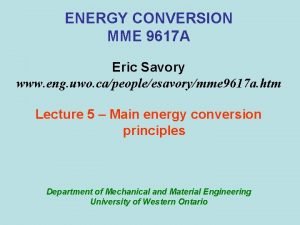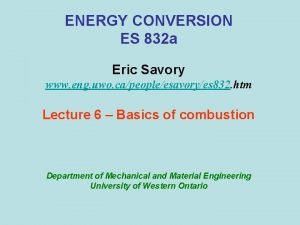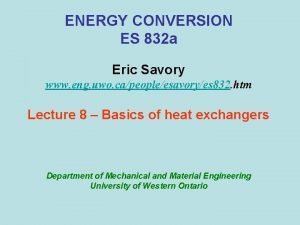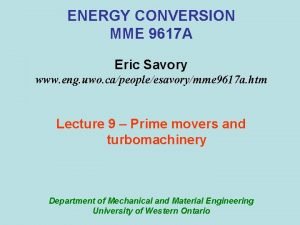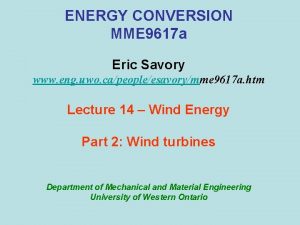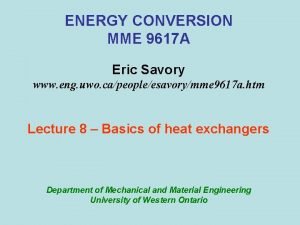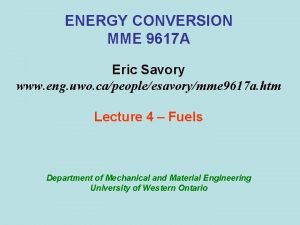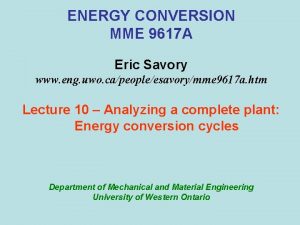ENERGY CONVERSION MME 9617 A Eric Savory www







- Slides: 7

ENERGY CONVERSION MME 9617 A Eric Savory www. eng. uwo. ca/people/esavory/mme 9617 a. htm Lecture 3 – Identification of system components for energy conversion Department of Mechanical and Material Engineering University of Western Ontario

The main system components for energy conversion Primary Energy Source Primary Conversion System Secondary Conversion System Primary End User Energy Recovery Subsystem Heat Rejection Secondary End User

The following schematic shows a typical implementation of a small-scale energy conversion system:

Primary Energy Source: Generally fuels 1. Chemical Energy — Combustion - heat to mechanical — Fuel Cells - directly to electrical 2. Gravitational Potential — Power dams, tidal stations - gravity to mechanical 3. Solar Energy — Wind Energy - mechanical (direct or electrical) - solar panels (directly to electrical or heat)

Conversion System: 1. Primary: convert heat or fluid power to mechanical energy (turbines) 2. Secondary: convert mechanical energy to electrical power (generators) Energy Recovery Sub-system: Systems which use rejected heat for: 1. Increasing cycle efficiency (eg. secondary turbines, pre-treatment) 2. Convert heat for secondary applications (cogeneration, parallel cycles) Heat Exchangers are heavily used in these systems.

SUMMARY (1): • Energy conversion systems consist of several sub-systems • The sub-systems are coupled and thus must be analysed concurrently o Changing one component will influence the entire system. It is often the case that replacing a component with a higher efficiency component may actually result in an overall loss of efficiency. o The replacement of a component generally implies the modification of the entire system characteristics and thus a full economic calculation must follow a full technical analysis of the modified cycle.

SUMMARY (2): • Co-generation and heat recovery in secondary -cycles often depends on external factors: Is there a client for the heat produced? Are the market prices good enough to justify the extra cost? Hence, a good system is designed to operate as a stand-alone plant and the co-generation as a bonus benefit that does not impact on plant viability.
